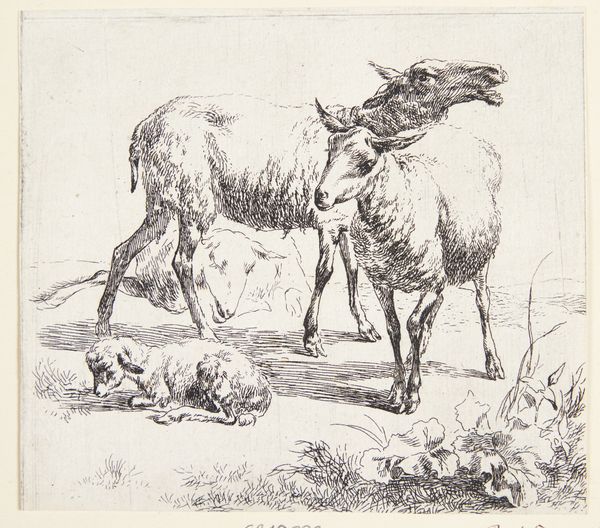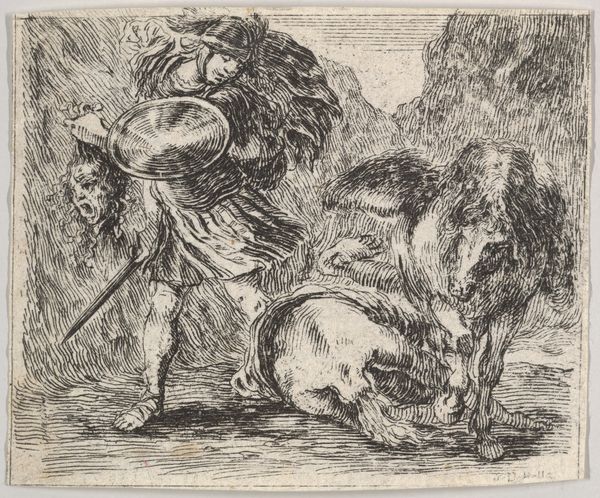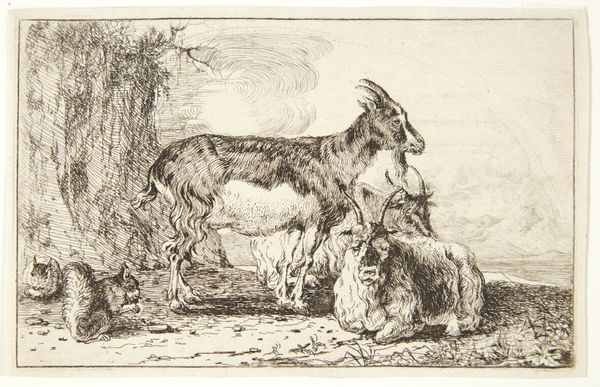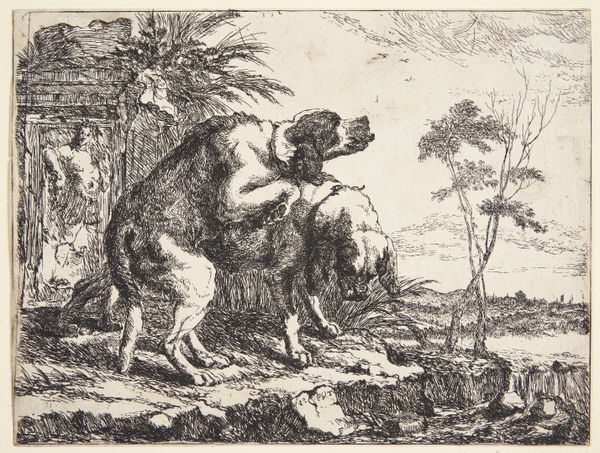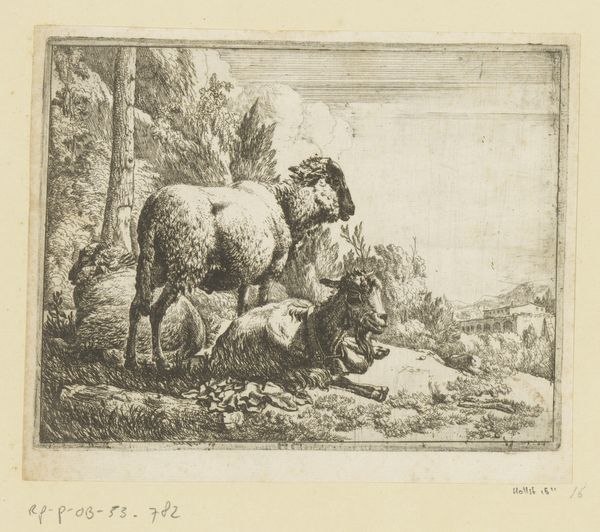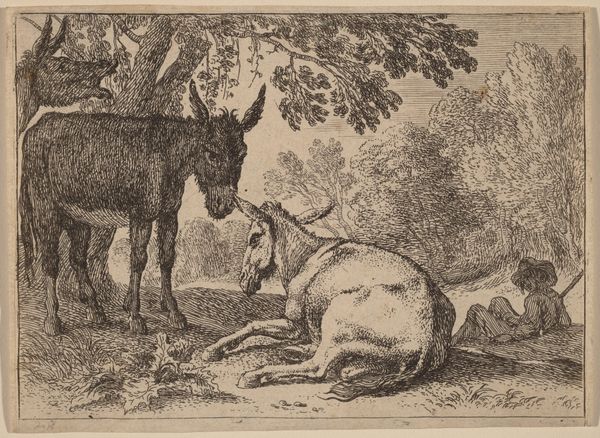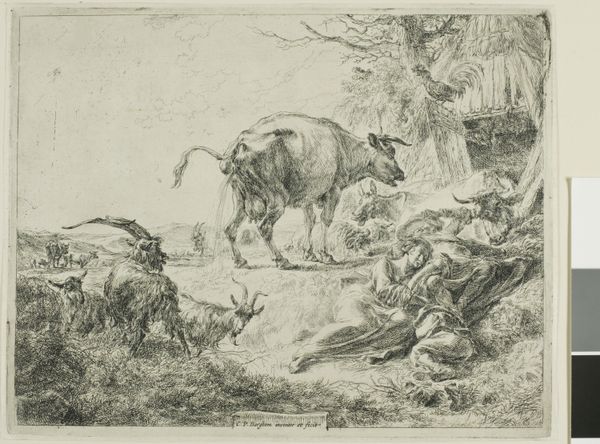
Dimensions: 7 11/16 x 10 13/16in. (19.6 x 27.5cm)
Copyright: Public Domain
Curator: I’m immediately struck by the dynamic composition—the contrasting light and shadow create such a sense of movement, don’t you think? Editor: Absolutely. We're looking at "Centaur with a Young Satyr" by Giovanni Domenico Tiepolo, dating roughly from 1727 to 1804. It's a drawing in pen and ink with a grey wash, offering a glimpse into Tiepolo's fascination with mythological subjects. Considering the historical moment of its creation, these subjects acted as projections of human drives. Curator: Mythology as a conduit to exploring those primal drives, I completely agree. But speaking strictly from a formal perspective, observe how the centaur's muscular form intersects with the supple youth of the satyr—the artist emphasizes the stark juxtaposition between brute strength and delicate grace. The centaur could even be seen as representing the oppressor, with the satyr a victim of colonial violence, especially given Tiepolo's socio-economic positionality as a product of the Italian upper class during this period. Editor: An interesting interpretation. I was going to mention that the pen and ink work allows Tiepolo to create fine textures, see how he depicts the centaur's rough coat? Notice how the hatching creates this remarkable contrast and brings form to this creature that seems to emerge directly from the wild landscape. Curator: Precisely. And how does this formal treatment connect to contemporary issues of representation? Doesn't the idealization of these figures reflect a romanticized, even sanitized, view of power dynamics? Editor: While it might not explicitly address specific political realities, doesn't the dynamic composition itself enact a visual negotiation of power and freedom? You're asking us to superimpose issues of modern, political oppression onto an allegorical drawing made some 300 years ago. Curator: Art, at its most meaningful, isn't a thing from the past; it speaks to the current moment by revealing the foundations that it's standing on. Editor: That's well said. Perhaps the strength of the work is precisely that it encourages us to find these multifaceted readings and to think more critically. Curator: Indeed. It's in this clash of readings that we confront our own values.
Comments
No comments
Be the first to comment and join the conversation on the ultimate creative platform.

